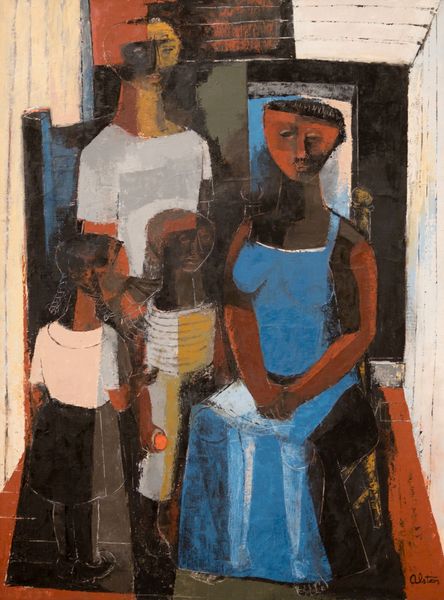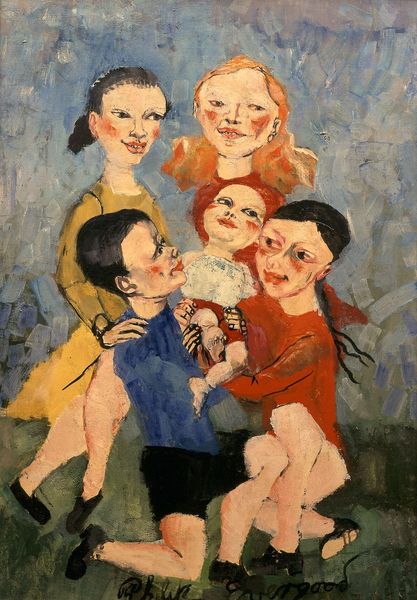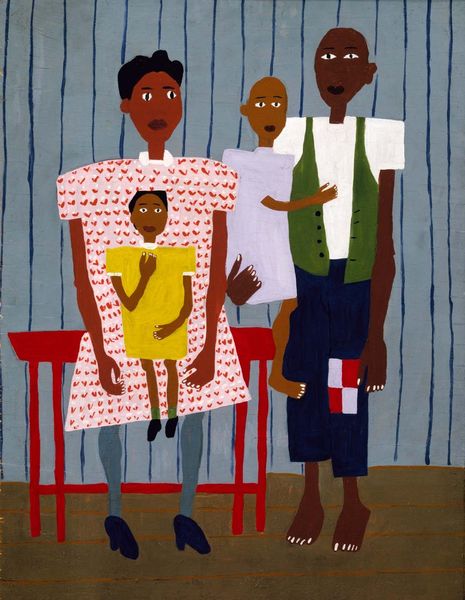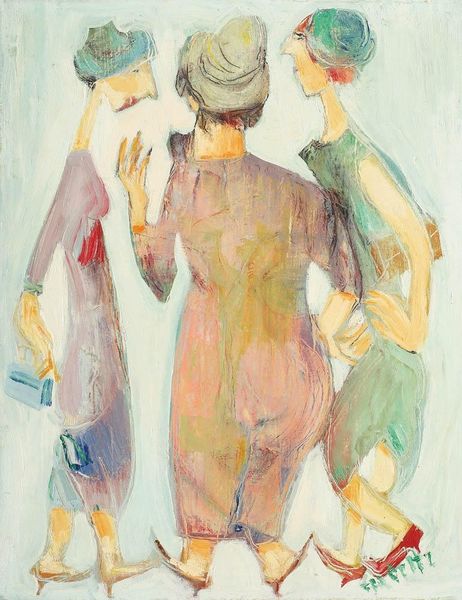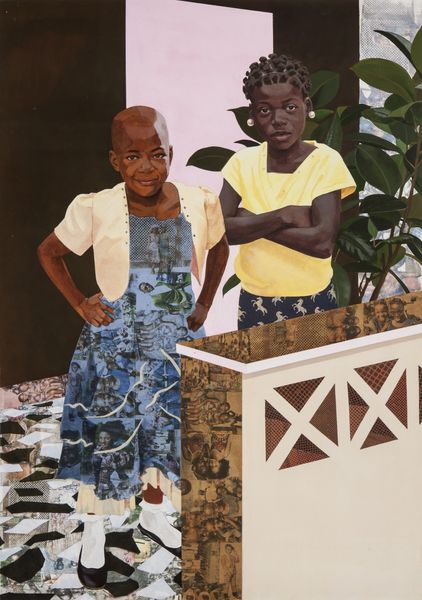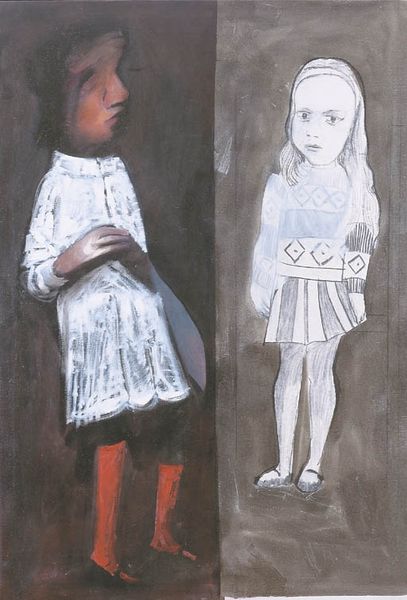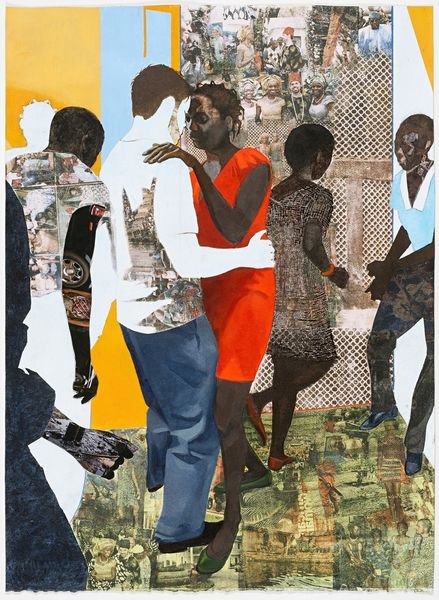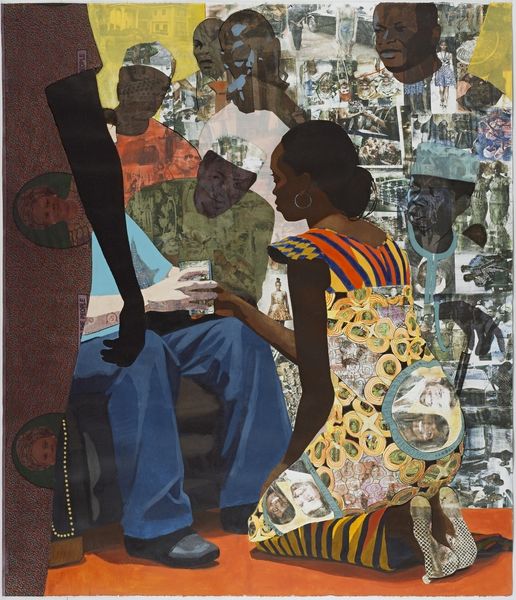
mixed-media, assemblage, sculpture, wood
#
portrait
#
mixed-media
#
assemblage
#
figuration
#
sculpture
#
pop-art
#
wood
Copyright: Marisol Escobar,Fair Use
Curator: Here we have Marisol Escobar’s sculpture, "The Family," created in 1962. It’s a striking mixed-media assemblage constructed primarily from wood. Editor: My initial impression? A rather unsettling tableau. The figures feel stiff, almost mannequin-like, with a crude, blocky quality that is quite off-putting. Curator: Consider the materials, though. Escobar uses found wooden objects and paints them, creating this stark, almost primitive effect. It critiques idealized portrayals of the nuclear family popular in the 1950s and early 60s by showing us this very unideal family. Think of the disposable objects from mass production, now used to display how families were packaged for social consumption at the time. Editor: That might be so, but there is something in the disproportion of these forms and the jarring placement of planes that seems intentionally discordant, a kind of deliberate disharmony. Note the textural contrasts between the smooth surfaces and the roughly carved faces. Curator: Absolutely. Escobar also leaves visible the marks of her process. Notice the chisel marks, the joins in the wood—nothing is hidden. It's as if she wants to reveal the labor involved in making not just the sculpture, but also this representation of the family unit. Also note the door behind the figure, adorned with stylized design and adding layers of depth. It evokes an eerie sense of privacy versus publicity here, or maybe constraint and enclosure? Editor: The subtle color palette—the faded yellows, blues, and reds—contributes to this melancholy feeling. The arrangement of these flat sculptural figures makes it seem almost like a flattened picture plane of interlocking wood panels. This play between 2D and 3D gives it an uncanny feeling. The lack of any sort of perspective lends to this almost nightmarish scene where we cannot easily read what is real and what is not. Curator: Indeed. We might see this piece, through its roughhewn aesthetic, critiquing the increasing automation of postwar society, even of the family unit itself. By foregrounding her manual labor, she offers an alternative to mass-produced commodities and the social constructs they uphold. Editor: Perhaps the strength of "The Family" lies precisely in its visual ambiguities. By engaging these stark, raw, material choices, Escobar compels us to confront the uncomfortable tensions beneath the surface of what we commonly think about an idea like 'family'. Curator: Well said. It leaves us contemplating the artwork, as well as the systems and meanings surrounding what we perceive to be the familiar.
Comments
No comments
Be the first to comment and join the conversation on the ultimate creative platform.
